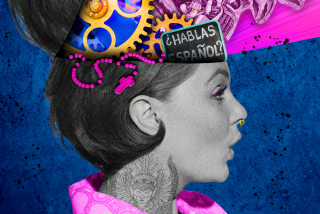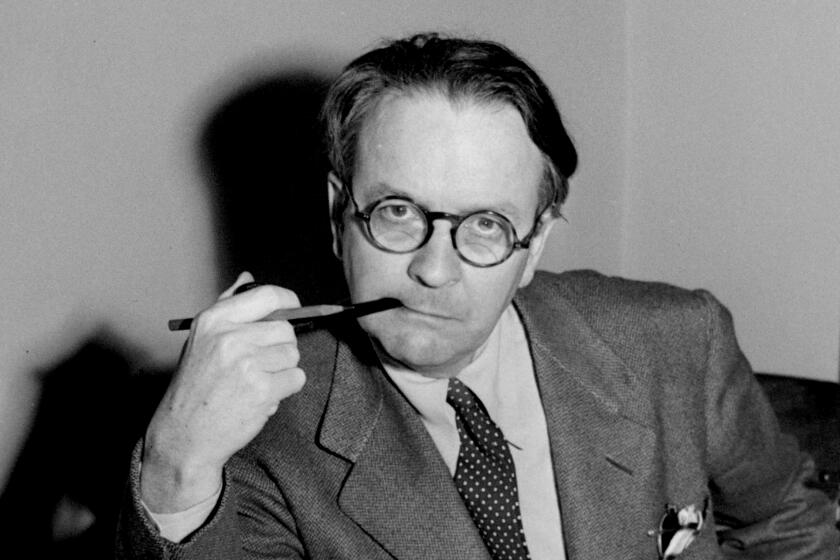Book review: ‘Island Beneath the Sea’ by Isabel Allende
In the days following the tragic Haitian earthquake, televangelist Pat Robertson made headlines when he claimed that Haiti’s founders had made a “pact to the Devil” to liberate themselves from the French slave owners, and he indirectly attributed the earthquake to the consequences of the Haitian people being thus “cursed.”
His comments, in addition to riling up folks, may have driven those of us not well-versed in Haitian history to look up a few details to better understand how that small, deeply impoverished country became the first black-led republic in the world when it gained independence as part of a slave rebellion in 1804. The history can be found easily enough, but to fully penetrate the world in which the slave rebellion took place — to understand what life was like on the sugar plantations, to enter the mindset of slaveholders and slaves alike, to examine the psychological drama at work in those relationshipsand, ultimately, to sense viscerally the drive for human dignity that impelled them to freedom — one may also reach for Isabel Allende’s new novel, “Island Beneath the Sea.”
Although the tale is not centered on that revolt, per se, its narrative uses the revolt (and famous historical figures) as backdrop. Central to the story is Zarité (known as Tété), a mulatta slave girl, and Toulouse Valmorain, a young Frenchman who arrives in Saint-Domingue (as the French colony was known before independence) for what he believes will be a short visit in 1770 but who ends up inheriting his father’s vast sugarcane plantations, including hundreds of slaves. Valmorain has no idea he’ll spend the rest of his life surrounded by plantations and participate in the brutal oppression of slaves, nor does Tété have any idea, when Valmorain purchases her to serve as his wife’s slave, that the two of them will engage in a lifelong dance of control and manipulation, sharing children, houses, even a harrowing escape from the island during the slave revolt.
They will share everything — except what each dreams of. Valmorain simply wants a good life and to see his son Maurice grow up and take his place. Tété, on the other hand, dreams of the island beneath the sea, a paradise where “rhythm is born … it shakes the earth, it cuts through me like a lightning bolt and rises toward the sky, carrying with it my sorrows so that [voodoo god] Papa Bondye can chew them, swallow them, and leave me clean and happy.”
Tété, in short, dreams of freedom.
Throughout, the theme of striving for a better world is omnipresent. Early on, Tété is told to “[t]ear that idea of freedom from your heart, that is the best thing you can do.” But she’s unable to let it go, and that urge for freedom, set against the drive for profits by the slaveholders, fuels much of the narrative tension. But the world is changing, and slavery is beginning to slam up against abolitionists as freed former slaves, current slaves and slaveholders alike all try to make sense of the new world, groaning with birth pangs.
Particularly enjoyable are scenes in which the religion of the slaves — a form of voodoo originating in Haiti — mixes with the Catholicism of New Orleans. Tété, who becomes a kind of healer, helps the wife of the plantation manager, an Irish Catholic immigrant, care for a slave they fear is about to die in childbirth. “ ‘Erzulie, mother loa, help it be born,’ Tété prayed aloud [to the voodoo goddess]. ‘Saint Raymond Nonatus, pay attention, do not let an African saint get ahead of you,’ Leanne answered in the same tone, and they both burst out laughing.”
Even Père Antoine, the priest known as the Saint of New Orleans, does not seem to object to this intermingling of faith. In one scene, in which Tété is helping the good father in treacherous conditions, Tété calls out to the Goddess Erzulie, asking her to watch over them in their efforts. “Jesus watches over us, Tété,” the priest assures her when he hears her pleas. “And if his attention wanders, mon père?” she asks.
With this admirable novel, Allende cements her reputation as a writer of wide scope and amazing talent. Although very traditional in its unfolding — readers enamored by her use of magical realism will find little in this narrative — this historical novel does what one hopes a book of its ilk will do: transport readers to a new world, open up history and make it come alive, and cause readers to forget time passing in the world the author has so carefully and lovingly built.
Murphy is the author of several nonfiction books and of the forthcoming novel “Grace Notes.”
More to Read
Sign up for our Book Club newsletter
Get the latest news, events and more from the Los Angeles Times Book Club, and help us get L.A. reading and talking.
You may occasionally receive promotional content from the Los Angeles Times.








